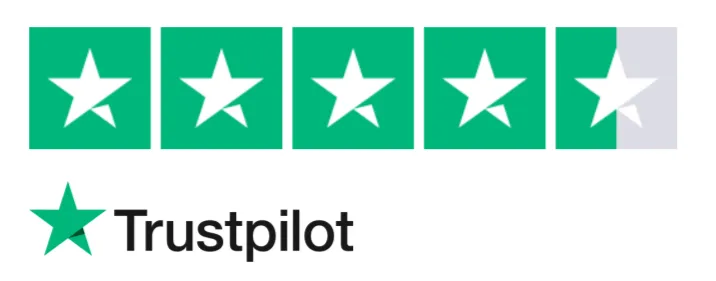Businesses generate massive volumes of information daily, and this data holds immense potential to drive decision-making and streamline operations, provided it can be efficiently collected, processed, and analyzed. This is where data ingestion becomes crucial. This comprehensive guide will explore data ingestion, its types, importance, use cases, tools, and how Parseur can streamline this process.
Key Takeaways
- Data ingestion is collecting and importing raw data into a central repository for processing or analysis.
- Automating data ingestion improves efficiency, reduces errors, and supports real-time decision-making.
- Use cases range from e-commerce and healthcare to finance and logistics, where vast amounts of structured and unstructured data are processed.
- Tools like Parseur simplify automated data ingestion by extracting and integrating data seamlessly.
What is data ingestion?
Data ingestion is collecting and transporting data from various sources into a central repository, such as a data warehouse, database, or data lake, for further processing and analysis. This step ensures that raw data, whether structured or unstructured, is accessible and actionable for analytics or decision-making.
Example: A retailer collecting sales data from its e-commerce platform, inventory systems, and POS terminals and consolidating it in a centralized analytics platform.
Why is data ingestion necessary?
Data ingestion is the first step in processing data. Here are the main reasons why it’s essential for your organization:
- Efficient data handling: It enables businesses to handle large volumes of data without manual intervention, improving efficiency.
- Real-time decision-making: Ingested data is processed in real-time, enabling businesses to act on live insights.
- Data accessibility: Ensures all necessary data is centralized, organized, and accessible for analytics and reporting.
- Scalability: Automated data ingestion tools adapt to growing data volumes, supporting business expansion.
According to an IDC report, the global data sphere is expected to reach 175 zettabytes by 2025, making efficient data ingestion more critical.
The data ingestion process
Data ingestion involves transforming raw data from various sources into actionable insights. Each step is critical in ensuring the data is accurate, accessible, and ready for use in analytics or decision-making. Let’s break down the key stages in the data ingestion process:
Data source identification
Every data ingestion process begins with identifying where the data originates.
Examples of data sources:
- Emails: Customer inquiries, orders, and notifications.
- IoT Devices: Sensors collecting real-time metrics like temperature or motion.
- Databases: Transaction logs or inventory records.
- Social Media: User-generated content like reviews or posts.
Accurately identifying data sources ensures that no critical information is overlooked.
Data collection
Once the sources are identified, the data must be collected efficiently and securely.
Methods of Data Collection:
- APIs: Extract data programmatically from software platforms.
- Webhooks: Push data in real-time as events occur.
- Automation tools like Parseur: Simplify data collection from emails, PDFs, and other unstructured formats.
Handling data in different formats (e.g., structured, semi-structured, unstructured) requires flexible tools to ensure nothing gets lost in translation.
Data processing
Raw data often contains errors, inconsistencies, or irrelevant information. Processing transforms it into a clean, structured format suitable for analysis.
- Data cleaning: Removing duplicates, errors, or corrupted entries.
- Data transformation: Standardizing formats (e.g., date formats or currency symbols) to ensure compatibility with storage systems.
- Validation: Checking data accuracy against predefined rules or benchmarks.
Data storage
Processed data must be stored securely in a repository that facilitates easy access and scalability.
Common storage solutions:
- Data warehouses: Centralized repositories for structured data, ideal for reporting and analysis.
- Data lakes: Flexible storage for raw or semi-structured data, often used in AI and machine learning.
- Cloud-based storage: Scalable solutions like AWS S3, Google Cloud Storage, or Azure.
Is data ingestion the same as ETL?
Data ingestion and ETL (Extract, Transform, Load) are related concepts in data management but serve distinct purposes and processes.
Data ingestion vs ETL
| Aspect | Data Ingestion | ETL (Extract, Transform, Load) |
|---|---|---|
| Objective | Collects raw data and transfers it to a repository. | Extracts, transforms, and loads data into a data warehouse. |
| Focus | Speed and scalability. | Data transformation and cleansing. |
| Output | Raw, unstructured, or semi-structured data. | Fully structured and formatted data |
| Use Case | Real-time analytics or data lakes. | Historical data analysis or data warehouses. |
Data ingestion is the first step in many workflows, followed by ETL. For instance:
- Data Ingestion: Raw sales and customer data are ingested from emails, IoT devices, and social media into a data lake.
- ETL: The ingested data is then transformed into a unified schema and loaded into a data warehouse for analysis.
Manual vs. Automated data ingestion
The manual process involves manual data entry, extraction, or uploading and is time-consuming, error-prone, and unsuitable for large data volumes.
The automated process uses tools or scripts to ingest data automatically from multiple sources. It improves accuracy, reduces time and supports scalability.
AI in data ingestion
AI-powered tools enhance the data ingestion process by:
- Automating pattern recognition in unstructured data.
- Adapting to new data formats with machine learning.
- Enabling predictive analytics for proactive decision-making.
McKinsey reports that AI adoption in data processing can increase productivity by up to 40%.
Where does data governance fit in data ingestion?
Data governance ensures that ingested data is secure, compliant, and high-quality. A robust governance framework includes:
- Compliance: Meeting regulatory standards (e.g., GDPR, HIPAA).
- Data lineage: Tracking the origin and transformation of data.
- Access control: Restricting data access to authorized users.
What should you look for in a data ingestion tool?
The ideal tool should simplify data integration, ensure accuracy, and adapt to your organization's evolving needs.
- Ease of Use: A user-friendly interface with minimal technical expertise is required.
- Scalability: Ability to handle growing data volumes and diverse sources.
- Integration Capabilities: Seamless connection to CRMs, ERPs, databases, or analytics platforms.
- Security and Compliance: Adheres to data protection standards like GDPR or HIPAA.
- Real-Time Processing: Supports live data ingestion for immediate analytics.
Examples and use cases of data ingestion
Below are detailed examples and use cases highlighting how data ingestion transforms operations across various sectors:
E-commerce: Centralizing customer orders
E-commerce businesses often sell through multiple platforms like Shopify, Amazon, and eBay. Managing orders from these channels manually can lead to delays and errors.
- Example: A clothing retailer uses a data ingestion tool to pull order data from Shopify and Amazon, ensuring accurate inventory levels and faster order processing.
Healthcare: Unifying patient records
Healthcare providers often struggle with siloed systems for patient records, lab results, and prescriptions.
- Example: A hospital uses data ingestion to integrate lab results with patient medical histories, allowing doctors to access comprehensive data during consultations.
Finance: Streamlining accounting processes
Financial institutions and accounting teams daily process vast amounts of invoices, receipts, and transaction records.
- Example: A fintech company ingests payment receipts from various payment gateways, automating monthly financial reconciliations.
IoT Devices: Monitoring and maintenance
IoT devices, such as smart sensors in manufacturing plants, generate vast amounts of real-time data.
- Example: A factory uses IoT sensors to monitor equipment performance and ingest data into analytics platforms, reducing downtime by scheduling proactive maintenance.
Conclusion
Data ingestion is the backbone of any data-driven strategy, ensuring raw information is accessible, organized, and actionable. Automating this process is no longer optional—it’s essential for staying competitive in today’s fast-paced business environment. Tools like Parseur simplify data ingestion, offering seamless integration, real-time processing, and scalability. Whether you’re a small business or an enterprise, investing in an efficient data ingestion solution is a step toward operational excellence.
Last updated on




